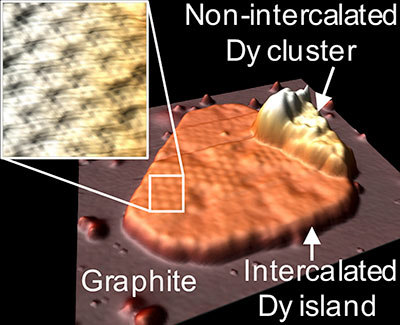Scientists at the U.S. Department of Energy’s Ames Laboratory have demonstrated a new process to sheathe metal under graphene, which may lead to new and better-controlled properties.

The researchers encapsulated dysprosium, a magnetic rare-earth metal, by bombarding the top layer of bulk graphite with ions to create defects on its surface, followed by high-temperature deposition of the metal. It resulted in mesas or islands of dysprosium underneath a single layer of graphene. The formations are said to be significantly different than anything the Laboratory’s 2D materials experts have ever seen.
That suggests we have a very adaptable recipe for producing this kind of surface material, which makes its discovery very exciting in terms of potential applications, said an Ames Laboratory scientist and Distinguished Professor of Chemistry and Materials Science and Engineering at Iowa State University. If we can control the process so that we can deliberately pattern the formation of these little metal slabs, perhaps we can harness and control their magnetic and electronic properties.